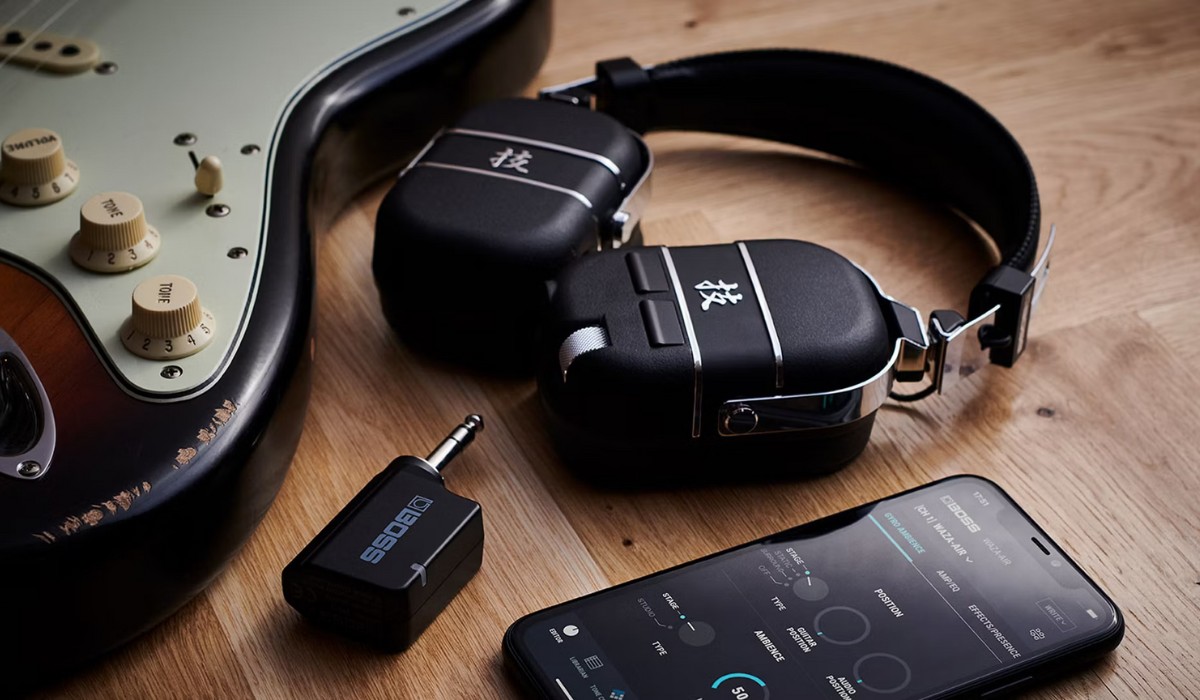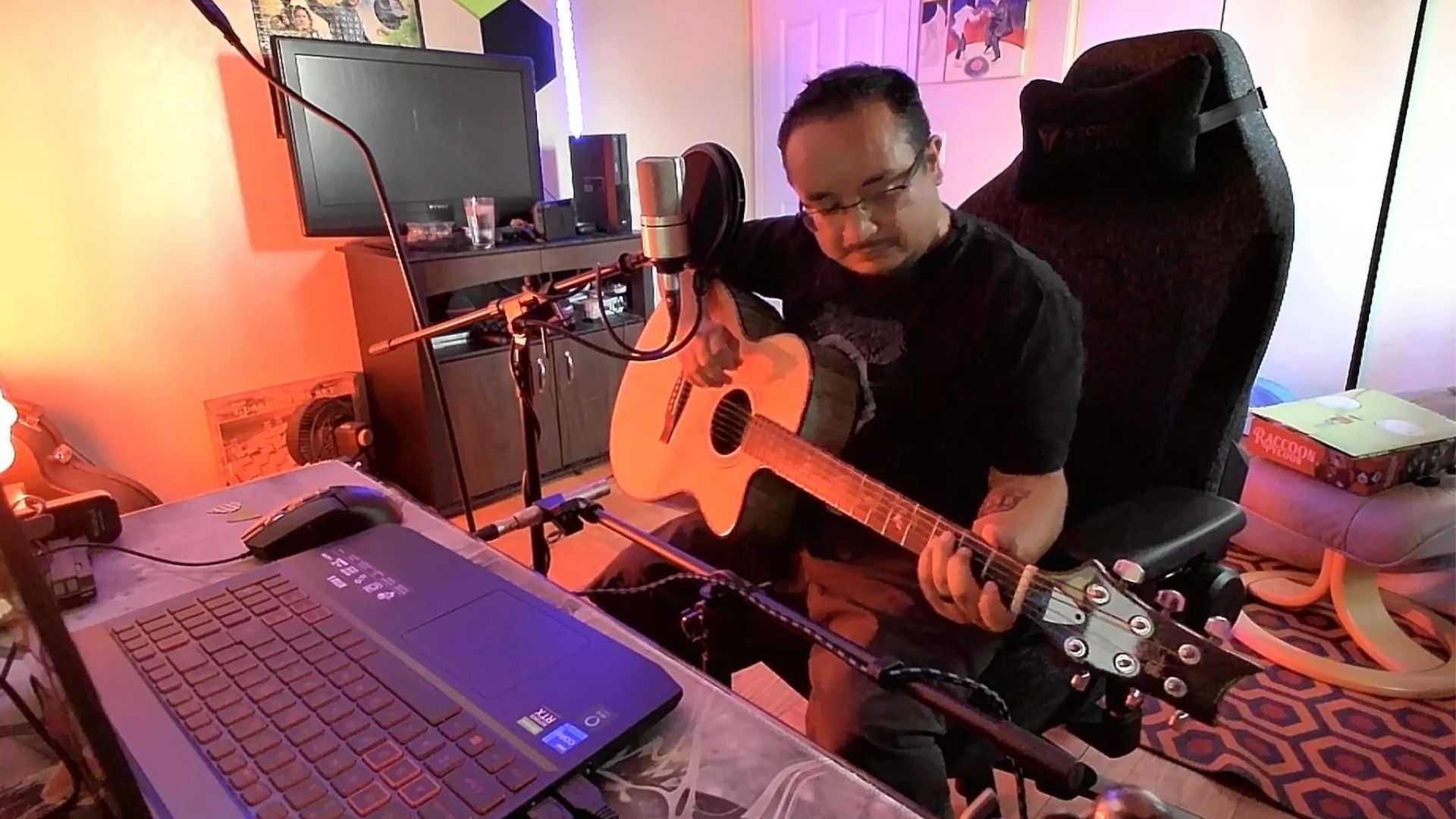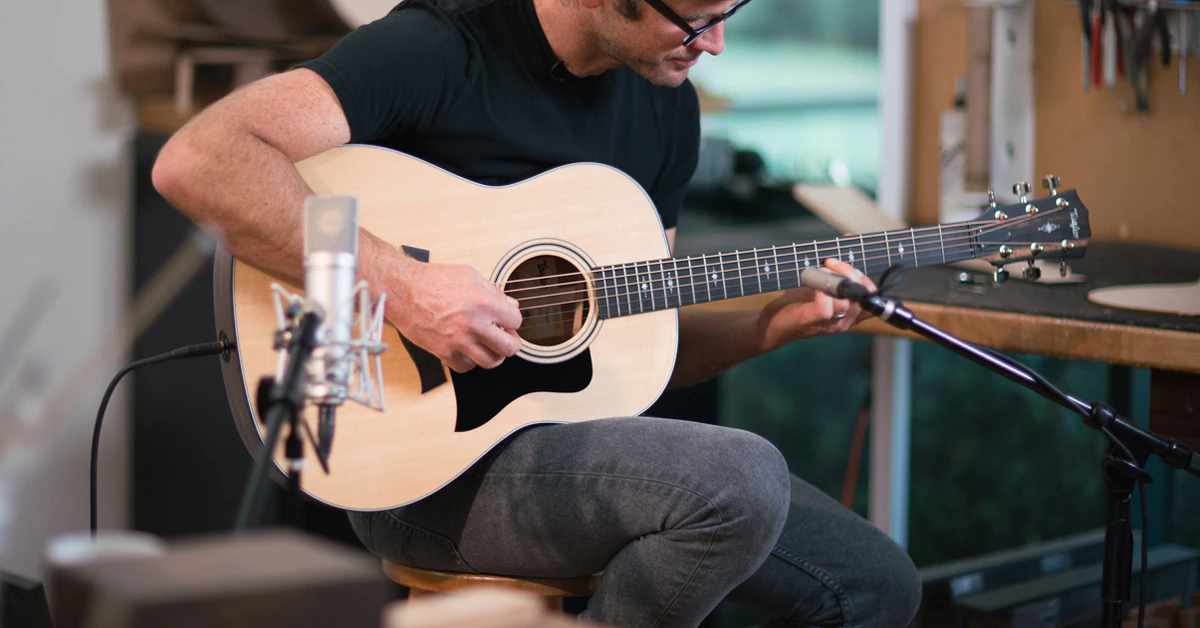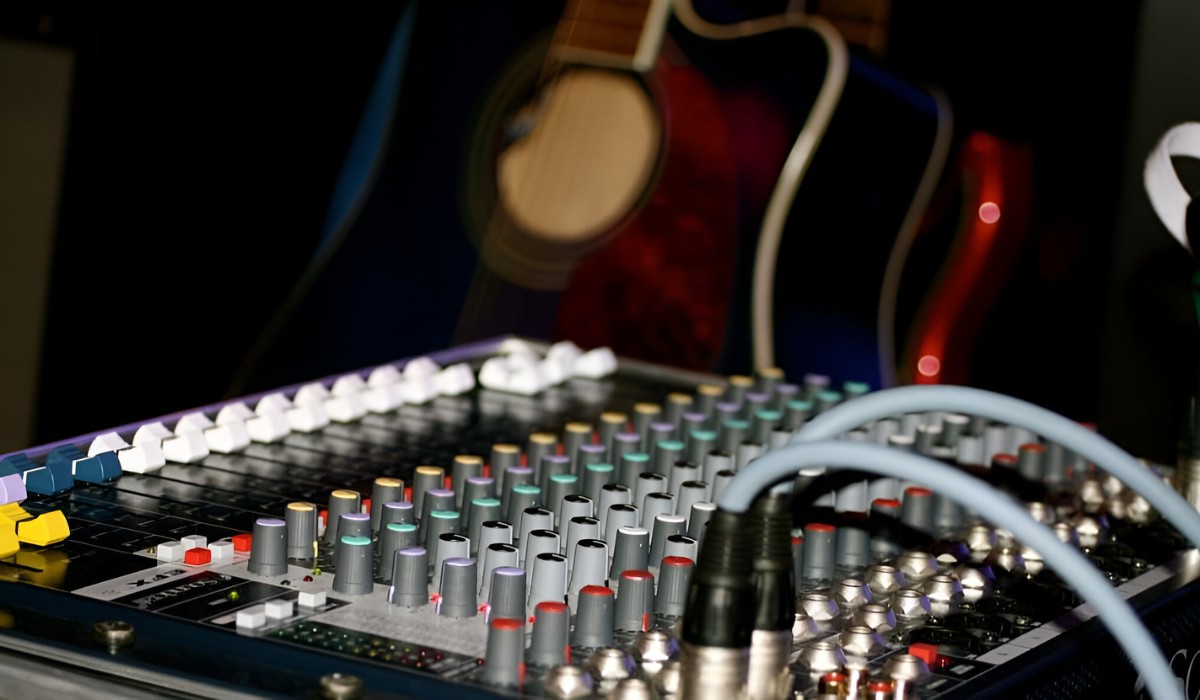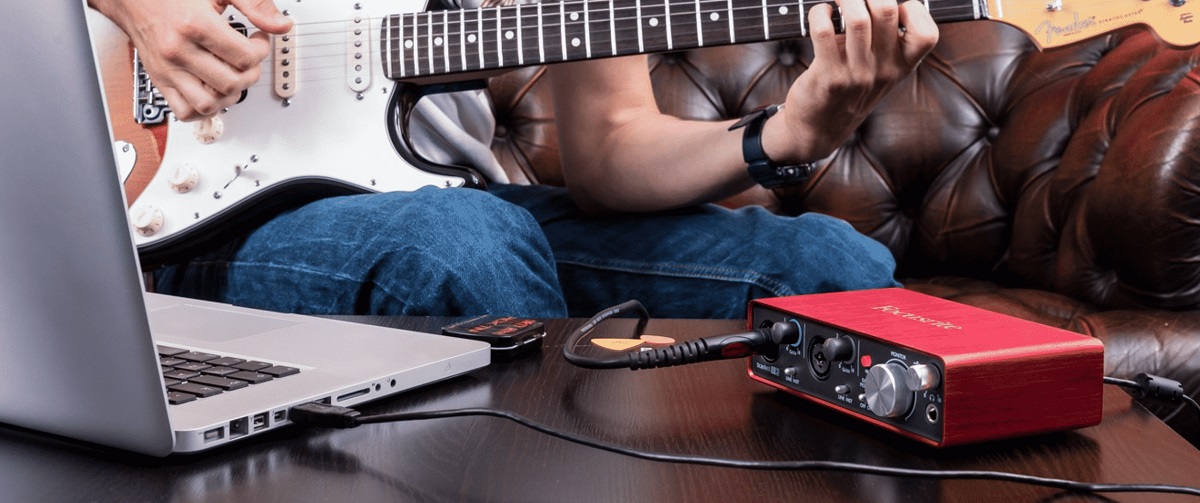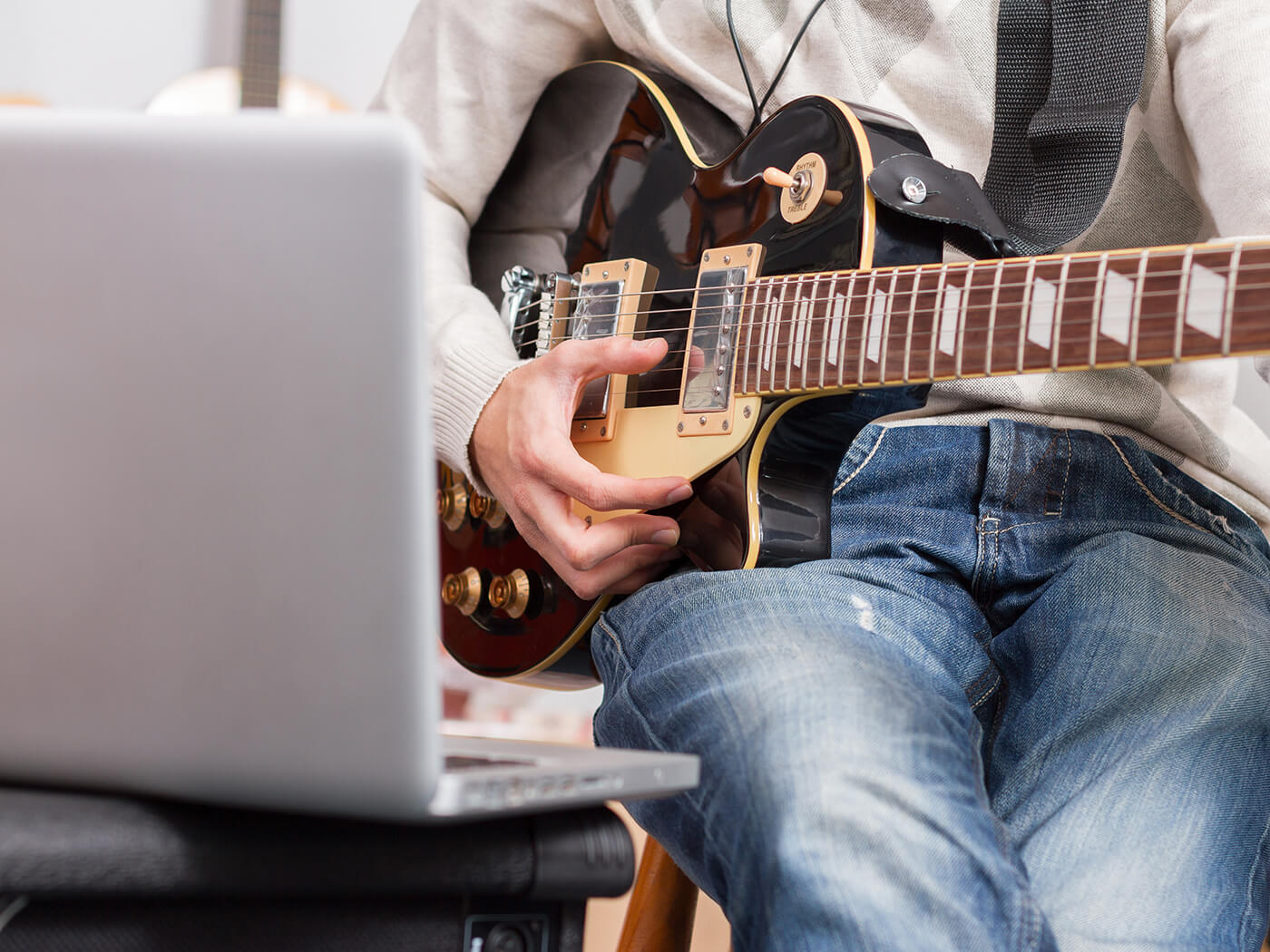Introduction
Playing an electric guitar is a thrilling experience, but it often involves loud amplifiers that can disturb others. Fortunately, with the innovation of electric guitar headphones, guitarists can now enjoy their instrument without disturbing the peace. These headphones provide a convenient way to practice, play, and record music without the need for a full amplifier setup. In this article, we will explore the benefits of using headphones with an electric guitar, how to choose the right headphones, the process of connecting your electric guitar to headphones, adjusting your guitar settings for headphone use, and tips for playing with headphones.
Electric guitar headphones have revolutionized the way guitarists practice and perform, offering a more private and immersive experience. Whether you're a beginner honing your skills, a seasoned player exploring new sounds, or a musician looking to record tracks silently, electric guitar headphones provide a versatile solution. By understanding the advantages of using headphones with an electric guitar and mastering the techniques involved, you can elevate your playing experience to new heights.
Now, let's delve into the world of electric guitar headphones and uncover the myriad benefits and techniques that will enhance your musical journey. Whether you're a solo artist, a band member, or an aspiring guitarist, the insights shared in this article will empower you to make the most of your electric guitar while respecting the peace and privacy of those around you.
Benefits of Using Headphones with an Electric Guitar
Using headphones with an electric guitar offers a multitude of benefits that cater to the diverse needs and preferences of guitarists. These advantages extend beyond mere convenience, significantly impacting the quality and versatility of the playing experience. Here are several compelling benefits of incorporating headphones into your electric guitar setup:
- Privacy: When practicing or performing with headphones, you can enjoy complete privacy, making it an ideal solution for late-night sessions or shared living spaces. The immersive sound experience allows you to focus solely on your playing without external distractions.
- Portability: Electric guitar headphones provide exceptional portability, enabling you to practice and play your instrument anywhere without the need for bulky amplifiers. This mobility is especially advantageous for musicians who are frequently on the go or need a compact practice solution.
- Versatility: Headphones offer a versatile listening experience, allowing you to explore various tones, effects, and playing styles without disturbing others. This flexibility enables you to experiment with different sounds and techniques, enhancing your musical creativity.
- Recording Capabilities: Using headphones with an electric guitar facilitates seamless recording sessions, as it allows you to monitor your playing and the backing tracks with precision. This feature is invaluable for musicians who engage in home recording or require precise monitoring during performances.
- Sound Isolation: Quality headphones provide effective sound isolation, ensuring that you can hear your instrument clearly without external interference. This focused listening environment allows for heightened concentration and a deeper connection with your playing.
- Hearing Protection: By using headphones, you can protect your hearing from prolonged exposure to loud amplifiers or external noise. This is particularly beneficial for long practice sessions and performances, safeguarding your auditory health without compromising the quality of your sound.
These benefits collectively demonstrate the transformative impact of incorporating headphones into your electric guitar setup. Whether you prioritize privacy, portability, versatility, recording capabilities, sound isolation, or hearing protection, electric guitar headphones cater to a diverse array of needs, amplifying the joy and convenience of playing the instrument.
Choosing the Right Headphones
When selecting headphones for use with an electric guitar, it’s essential to consider several key factors to ensure an optimal and enjoyable playing experience. The right headphones can significantly enhance the sound quality, comfort, and versatility of your practice sessions and performances. Here are essential considerations to guide you in choosing the perfect headphones for your electric guitar:
- Sound Quality: Look for headphones that deliver high-fidelity sound reproduction, capturing the nuances of your electric guitar’s tones and effects with clarity. A balanced frequency response, ample dynamic range, and minimal distortion are crucial for an immersive and accurate listening experience.
- Comfort and Fit: Opt for headphones that provide a comfortable and secure fit, allowing you to wear them for extended periods without discomfort. Adjustable headbands, cushioned ear cups, and lightweight designs contribute to a pleasant and fatigue-free playing experience.
- Open-Back vs. Closed-Back: Consider whether open-back or closed-back headphones align with your preferences. Open-back headphones offer a more natural and spacious sound, while closed-back headphones provide better sound isolation and minimal sound leakage.
- Cable Length and Type: Ensure that the headphone cable is of sufficient length to accommodate your playing setup. Additionally, some headphones feature detachable or coiled cables, offering flexibility and convenience in various environments.
- Impedance and Sensitivity: Check the impedance and sensitivity ratings of the headphones to ensure compatibility with your electric guitar and audio interface. Matching these specifications optimizes the sound output and prevents potential distortion or inadequate volume levels.
- Portability and Durability: If you intend to use the headphones for on-the-go practice or performances, prioritize portability and durability. Foldable designs, protective cases, and robust construction contribute to the longevity and convenience of your headphones.
- Additional Features: Explore additional features such as in-line volume controls, interchangeable ear pads, and compatibility with audio accessories. These extras can enhance the functionality and customization of your headphone setup.
By carefully considering these factors and prioritizing your specific preferences and playing requirements, you can select headphones that complement your electric guitar setup and elevate your playing experience. The right headphones will immerse you in a world of captivating sound while providing comfort, versatility, and reliability, ultimately enhancing your musical journey.
Connecting Your Electric Guitar to Headphones
Connecting your electric guitar to headphones involves a straightforward process that enables you to enjoy a private and immersive playing experience. Whether you’re practicing in a shared space, recording music, or seeking a portable practice solution, understanding how to connect your electric guitar to headphones is essential. Here’s a step-by-step guide to help you seamlessly integrate your electric guitar with headphones:
- Choose the Right Adapter: Begin by selecting the appropriate adapter to connect your electric guitar to the headphones. For standard electric guitars with a 1/4-inch output jack, a 1/4-inch to 3.5mm adapter is typically required to interface with the headphone input.
- Plug in the Adapter: Insert the 1/4-inch end of the adapter into the output jack of your electric guitar. Ensure that the connection is secure to prevent any audio interruptions during playing.
- Connect the Headphones: Plug the 3.5mm end of the adapter into the headphone input of your chosen headphones. Once again, confirm that the connection is snug to maintain uninterrupted audio output.
- Adjust Volume and Settings: Set the volume levels on your electric guitar and headphones to a comfortable and safe level before playing. Additionally, adjust any tone or effect settings on your guitar to suit your desired sound.
- Test the Connection: Strum the strings of your electric guitar to ensure that the sound is transmitted accurately through the headphones. Make any necessary adjustments to the connections or settings if the audio output is distorted or inconsistent.
- Explore Headphone Features: Familiarize yourself with the features of your headphones, such as volume controls, sound isolation, and additional settings. Understanding these capabilities will enable you to tailor the sound and playing experience to your preferences.
By following these steps, you can seamlessly connect your electric guitar to headphones, unlocking a world of private and personalized playing experiences. Whether you’re practicing silently, recording music, or immersing yourself in your favorite tones and effects, the ability to connect your electric guitar to headphones offers unparalleled convenience and versatility.
Adjusting Your Guitar Settings for Headphone Use
When using headphones with your electric guitar, it’s essential to optimize your guitar settings to ensure an enjoyable and balanced sound experience. By adjusting your guitar’s tone, volume, and effects for headphone use, you can tailor the sound to your preferences while maintaining clarity and fidelity. Here are essential considerations for adjusting your guitar settings when using headphones:
- Volume Control: Begin by setting the volume on your electric guitar to a level that provides adequate signal strength without overwhelming the headphone output. Adjust the volume gradually to avoid sudden, jarring sound levels.
- Tone and EQ Settings: Experiment with your guitar’s tone and equalization (EQ) controls to achieve a balanced and pleasing sound through the headphones. Fine-tune the bass, midrange, and treble frequencies to suit the characteristics of your headphones and your preferred playing style.
- Effects and Amplifier Modeling: If your electric guitar features built-in effects or amplifier modeling, explore these settings to enhance your headphone experience. Experiment with different effects such as reverb, delay, and modulation to create captivating sounds tailored to headphone listening.
- Gain and Distortion: Adjust the gain and distortion levels on your guitar to achieve the desired level of overdrive or distortion without overpowering the headphone output. Strive for a dynamic and responsive tone that retains clarity and articulation through the headphones.
- Monitoring and Backing Tracks: If you’re using headphones for recording or practicing along with backing tracks, ensure that your guitar settings allow for clear monitoring of both your playing and the accompanying audio. Balance the levels to maintain a cohesive and immersive listening experience.
- Dynamic Playing: Consider the dynamics of your playing and how they translate through the headphones. Adjust your guitar settings to accommodate expressive playing techniques, ensuring that subtle nuances and powerful passages are faithfully reproduced through the headphones.
By fine-tuning these aspects of your electric guitar’s settings, you can optimize the sound for headphone use, creating a personalized and captivating playing experience. Whether you’re honing your skills, crafting new sounds, or recording music, adjusting your guitar settings for headphone use empowers you to explore the full potential of your instrument in a private and immersive environment.
Tips for Playing with Headphones
Playing an electric guitar with headphones offers a unique and versatile experience that requires a nuanced approach to fully capitalize on its benefits. Whether you’re a seasoned guitarist or just beginning your musical journey, incorporating headphones into your practice and performance routine can significantly enhance your playing. Here are valuable tips to maximize your experience when playing with headphones:
- Experiment with Different Tones: Take advantage of the privacy offered by headphones to explore a wide range of tones and effects on your electric guitar. Without concerns about disturbing others, you can freely experiment with various settings, amplifiers, and effects to discover new sounds and playing styles.
- Focus on Articulation and Dynamics: Playing with headphones allows you to hone your articulation and dynamic control, as subtle nuances and expressive playing are more perceptible in a private listening environment. Use this opportunity to refine your playing techniques and infuse emotion into your performances.
- Utilize Backing Tracks and Metronomes: Incorporate backing tracks and metronomes into your headphone practice sessions to enhance your timing, rhythm, and musicality. Playing along with accompaniment can sharpen your sense of groove and improve your ability to synchronize with other instruments.
- Embrace Silent Recording and Reamping: Headphones enable silent recording of your electric guitar performances, allowing you to capture high-quality audio without the need for loud amplifiers. Additionally, reamping – the process of sending recorded guitar tracks back through amplifiers and effects – can be seamlessly executed with headphones.
- Protect Your Hearing: While headphones offer privacy and isolation, it’s crucial to monitor and regulate the volume levels to protect your hearing. Avoid excessively high volumes during extended practice sessions and be mindful of your auditory health.
- Immerse Yourself in Practice: Use headphones as a tool for immersive and focused practice sessions, delving deeply into your playing without external distractions. This heightened concentration can lead to significant improvements in technique, creativity, and musical exploration.
- Explore Spatial Effects and Panning: If your headphones support spatial effects and panning, delve into these features to create a three-dimensional sonic experience. Experiment with stereo imaging and spatial effects to expand the sonic landscape of your playing.
By incorporating these tips into your headphone-based practice and performance sessions, you can harness the full potential of playing an electric guitar with headphones. Whether you’re refining your technique, crafting new sounds, or recording music, headphones provide a gateway to a personalized, private, and immersive musical journey.
Conclusion
In conclusion, the integration of headphones into the realm of electric guitar playing has opened up a world of possibilities for musicians across diverse skill levels and musical pursuits. The benefits of using headphones with an electric guitar, including privacy, portability, versatility, recording capabilities, sound isolation, and hearing protection, have redefined the practice and performance landscape for guitarists. The ability to immerse oneself in a private sonic environment while exploring an array of tones, effects, and playing techniques has transformed the way musicians engage with their instruments.
Choosing the right headphones tailored to individual preferences and playing requirements is crucial for optimizing the sound quality, comfort, and portability of the electric guitar experience. By carefully considering factors such as sound quality, comfort, open-back versus closed-back designs, cable length, impedance, and additional features, guitarists can select headphones that complement their playing style and elevate their musical journey.
Connecting an electric guitar to headphones and adjusting the guitar settings for headphone use are essential steps that empower musicians to seamlessly integrate their instruments with private listening environments. These processes enable guitarists to explore new sounds, record music silently, and personalize their playing experience while maintaining clarity and fidelity.
Furthermore, incorporating valuable tips for playing with headphones, such as experimenting with different tones, focusing on articulation and dynamics, utilizing backing tracks, embracing silent recording, protecting hearing, immersing in practice, and exploring spatial effects, enriches the headphone-based playing experience. These insights empower guitarists to refine their skills, unleash their creativity, and embark on a captivating musical journey within a private and immersive sonic realm.
Ultimately, the utilization of headphones with an electric guitar transcends mere convenience, offering a gateway to personalized, private, and versatile playing experiences. Whether you’re a dedicated practitioner, a recording artist, or a passionate musician seeking new sonic frontiers, the fusion of electric guitar and headphones paves the way for boundless exploration and artistic expression.







